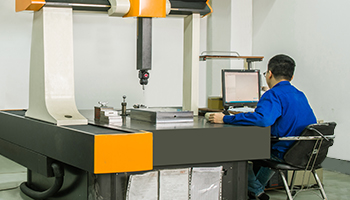- 最新文章
-
 Connector to precision plastic mold manufacturing manufacturers high requirements
Connector to precision plastic mold manufacturing manufacturers high requirements -
 Automotive stamping die manufacturing requirements for machine tools and tools
Automotive stamping die manufacturing requirements for machine tools and tools -
 Shenzhen mold parts industry technology in the market impact of the new breakthrough
Shenzhen mold parts industry technology in the market impact of the new breakthrough -
 The demand of automobile mould is huge, and the output value of Chinas mould industry leads the world
The demand of automobile mould is huge, and the output value of Chinas mould industry leads the world -
 Precision plastic mold processing process
Precision plastic mold processing process
Precision plastic mold injection molding 7 steps
Precision plastic mold injection molding 7 steps
1. Heating and preplasticizing
Driven by the screw drive system, the material from the hopper is transported forward and compacted. Under the mixing action of the heater outside the material barrel, the screw and the machine barrel, the material gradually melts. A certain amount of molten plastic has been accumulated in the head of the material barrel. The distance back is adjusted according to the amount of injection required by the metering device. When the predetermined amount of injection is reached, the screw stops rotating and moves back.
2. Mould closing and locking
The clamping mechanism pushes the template and the moving part of the mold installed on the moving template and the moving part of the mold on the moving template to close the mold and lock, so as to ensure that enough clamping force can be provided to make the mold lock during molding.
3. The injection device moves forward
When the die closing is completed, the entire injection seat is pushed forward to make the injector nozzle fully fit the main gate of the mold.
4. Injection and pressure maintaining
Completely after laminating mould clamping and the nozzle, the hydraulic cylinder injection into the high pressure oil, promote relative cylinder screw moved forward, will accumulate in the cylinder head of melt with enough pressure injection mould cavity, to make plastic volume contraction due to lower temperature, to ensure the density of plastic parts, dimension precision and mechanics performance, should be within the mold cavity on the melt to keep certain pressure, to supplement the materials.
5. Pressure relief
Pressure can be relieved when the melt at the mold gate is frozen.
6. Back up the injection device
Generally speaking, after the pressure relief is completed, the screw can be rotated and retreated to complete the next feeding and preplasticizing process. (under the current situation of injection molding, the action of withdrawal of the injection seat from the main gate of the mold has been cancelled, and this action can be performed for materials with serious salivation, such as PA).
7. Mold opening and ejection of plastic parts
After the plastic parts in the mold cavity are cooled and shaped, the mold locking mechanism opens the mold and pushes out the plastic parts in the mold.